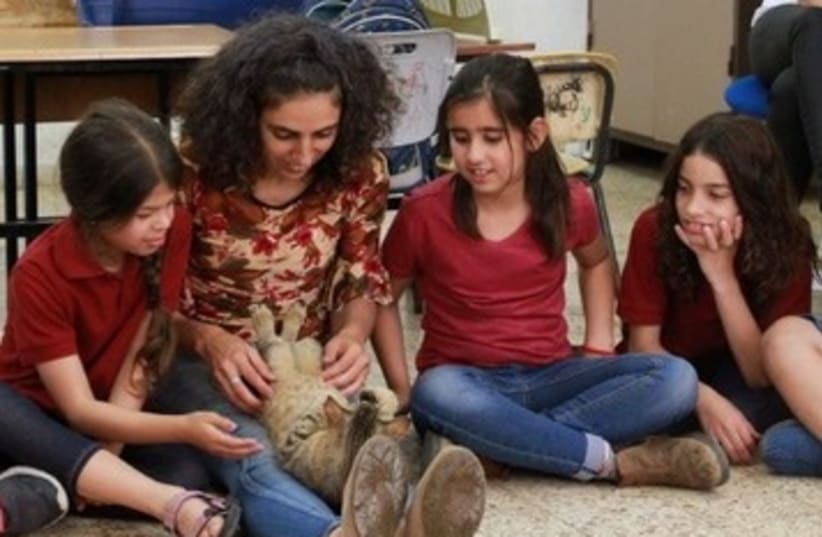These differences stem from Israel’s “separate but equal” education system, a system based on developing separate school systems for Jews and Arabs, which has contributed to deepening institutional discrimination and pedagogical stagnation across the country. Over the past few weeks, government and academic institutions attributed these gaps to underfunded schools, overcrowded classrooms and institutional neglect in the Arab sector; weak municipalities, a crippling organizational culture and outdated education methods. These results are demonstrated in the most recent PISA exam results, showing a widening achievement gap between Jewish and Arab students.
However, the achievement gap between Jewish and Arab students is a result of a more basic problem in Israel’s education system: having separate education systems and schools for Jews and Arabs.
Sixty-five years after the monumental ruling of the US Supreme Court in the Brown v. Board of Education case, which stated that separate can never be equal and will inevitably lead to inequality, this truth is denied in Israel.
Who denies it? Almost everyone. Both Jews and Arabs feel threatened – Arabs as a minority in Israel, and Jews as a minority in the region. Both groups also share extreme anxiety from the idea of intermarriage and assimilation. In fact, both communities see the segregated education system almost as an existential necessity.
The Arab citizens hope that the separated education system will protect their youth from assimilating into Israeli society. It is also a way to preserve their culture, language, national identity and historic narrative. In addition, it provides them with an illusion of some autonomy and a pool of scarce governmental jobs, which are very desirable in a reality of widespread poverty and economic instability.
For Israel’s Jewish citizens the separated education system is an effective tool for preserving supremacy, privileges and advantages. It also provides a legal framework for institutionalized discrimination and educating toward Zionist militarism. Ultimately, of course, it is meant to also prevent assimilation.
So, while the Arabs have been constantly hoping for “separate but equal,” most Jews were perfectly OK with only “separate.”
Now That everyone is recognizing the consequences of having a separate education system, it seems that all parties involved are surprised. These are the same parties who have been surprised by the rapid and alarming escalation of violence across Arab society in Israel. It may be that 70 years of systematic neglect and discrimination does have some Impact after all.
Despite primordial fear – on both sides – of one integrated Jewish-Arab education system, its establishment and implementation across the country is inevitable.
The rapid integration of Arab citizens in the Israeli academia, in businesses, health institutions and the government sector, cannot be reversed and will have to be based on an equal and integrated schooling system.
The design of the integrated education system must be based on three basic guiding principles:
• First, it must preserve and respect both identities, languages and cultures. The newly established schools must not be Jewish-Hebrew-Zionist institutions with some Arab students. These must be bilingual and multicultural schools. The idea is simple. In these schools, all students will be included and respected.
• Second, joining the new education system must be based on choice, at least in its early years. Forced attendance in the new system will be impossible given Israel’s ethnocentric culture and the support in both societies for separate systems.
• Third, the state must have a vested interest in supporting the new education system. To that end, it must provide favorable budgets and incentivize citizens to send their children to these schools. Hand in Hand’s bilingual schools, established in several cities across Israel, have developed an operational foundation for this socio-educational initiative.
Additional schools must be established in all of Israel’s mixed cities and regions, including Lod, Ramle, Jaffa, Acre, Haifa, Ma’alot-Tarshiha and Nof Hagalil (former Nazareth Illit). Other cities with increasingly mixed populations, namely Beersheba, Carmiel and Afula, should be included as well. Priority regions should include Menashe, Mateh Asher, Misgav, the Jezreel Valley and more. Of course, regions where Jewish communities neighbor Arab towns should also be included, even if they are officially in separate municipalities.
When integrated schools with favorable funds and priorities are established in mixed cities, ensuring a brighter future for their graduates, the demand to study in these schools will rise. This will be the first step in tackling the achievement gap between Jewish and Arab students and will eventually lead to a more prosperous and shared society in these communities and the country as a whole.
